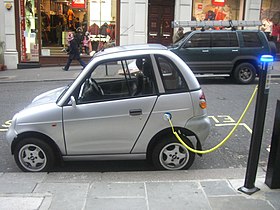With the advent of all these greenies protesting to stop being so destructive to the environment with cars and their emissions, car manufacturers have taken on different methods of propulsion, marketing them as green and no emission technology.
For one, this is just downright false, and two, the new cars are likely to have even more resources invested in them compared to the ones already on our roads.
Hydrogen cars
Let's start with them. First, the cars have to be manufactured, using numerous sources of energy and resources to accomplish this, through means of having to mine the ores and process them for use, as well as refine the petroleum products for the plastics and other materials used. There are two initial major places where the vehicles have already made their mark before even leaving the factory.
Second point, the fuel. We think of hydrogen as a green fuel, right? It's two thirds of all the water in our world I hear you say? Sure, but where does a majority of the hydrogen come from at present? You may have guessed what I'm leaning towards, yep, petroleum products. A majority of the hydrogen that is made available for use comes from the steam reforming of that black blood of the Earth, on your end it may be carbon neutral, but the carbon that was originally with the hydrogen has to go somewhere... Even if that's not enough, think of all the energy required to suck the black gold up from the Earth, having to drill for it, pump it, process and refine it then finally smack the hydrogen from it's loving carbon friends with steam, also requiring energy to break these bonds.
After all that, do these hydrogen cars marketed as green, and environmentally friendly (or invisible to the environment) seem so great now?
Electric cars
Now, I'm a bit of a fan of electric cars due to all the tech and power involved, but with all these cars coming on the market, they swing very well in my mind. As above, these cars still have to be manufactured somewhere, and that is nowhere near green (contrary to Nissan's beliefs).
As far as the energy used to run these vehicles, it's obvious where that comes from, here in Australia (where the Nissan Leaf is just coming out) it's pretty much all from coal. I don't think I have to explain how that's not very green (although it does allow for better separation of the nasties from the flue gasses).
Wrapping up
If you think that's all, you'd be wrong, there are also energy and material commitments which have to be made to get the energy/fuel from where it's being made to where it is consumed. This is likely to be more substantial with electric cars though, where each car is likely to pull at least 10A easy when slow charging, almost certainly more. This would jump up into the hundreds with fast charging stations, multiplied by all the cars to take up the technology and it's obvious the electricity network will have BIG problems. To combat this, people may think solar panels, but hey, when do people charge their cars? At night. This would merely make your car "carbon neutral", not helping the grid any, if anything creating a worse situation.
Imagine there are a heap of houses feeding electricity into the power grid during the day, with photovoltaics. This would appear fine, but you consider that almost all users would charge at night, creating a mighty imbalance. This would require power plants to reduce their capacity during the day (running at reduced efficiencies), and call for peaking stations to jump on at night, like diesel generators or gas turbines. Not very environmentally friendly.
With the current approaches being taken from these big CEO's, I can't realistically see either of these two methods being viable on the large scale, as they both end up with large amounts of emissions and extreme upgrades needing to be implemented.
As was mentioned earlier, I have a bias towards electric cars, hence my opinion on the matter is that the car manufacturers should work on retrofitting older, and perfectly good cars for one (such as Rowetel's conversion), while working with the energy industry to support these large demand curves it would impose.
That's all I've got to say on the matter at present, and if you've ventured this far I'd love to hear what you have to say on the matter, drop a comment below!

No comments:
Post a Comment